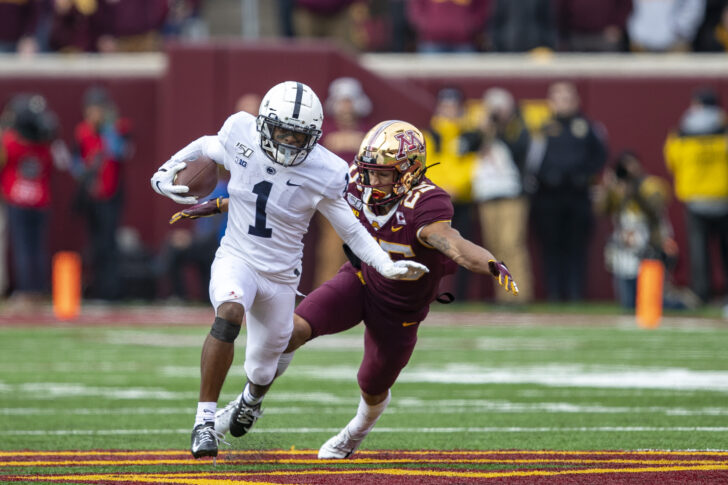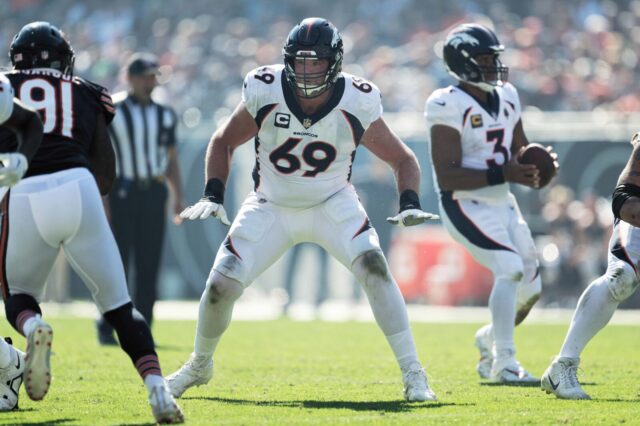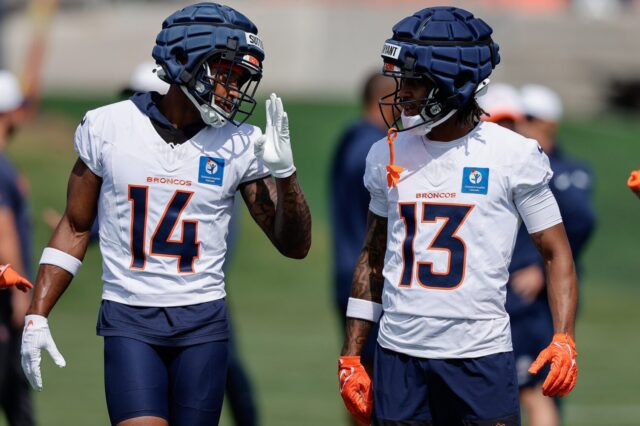Denver’s selection of K.J. Hamler in the middle of the second round is easily one of their most controversial picks, as they passed up highly-rated tackles and linemen to make the move.
That being said, it’s easy to understand John Elway’s mentality behind the move. He’s gone up against the Chiefs and Tyreek Hill since 2016, and now he wants to fight fire with fire.
Can Hamler even reach the lofty peaks of Hill’s play over the last five years, though? Let’s take a look.
Positives
K.J. Hamler was one of two players in this draft class with truly game-breaking acceleration and speed, the other being Henry Ruggs III.
Unfortunately for the combine-viewing public, Hamler was recovering from a hamstring tweak suffered in the week prior, so he sat out the 40-yard dash, leaving the question as to who is truly faster unanswered.
More important than Hamler’s straight-line long speed, at least through a football lens, is his incredible short range burst. Watching him play, you’d swear he could teleport a yard or two at a time, as launches from 0-60 faster than the finest Italian sports car.
Hamler isn’t just some lightweight burner though, like the busts of draft-mas past, a la John Ross, that spends more time in the shop than on the field. He’s incredibly tough given his frame, and he runs through the occasional arm tackle despite not being a power runner by any means.
Negatives
Hamler’s hands are the biggest question mark hovering around him currently. While at Penn State, he dropped the ball way too much. Per PFF, 12 times on 70 catchable targets to be exact for a downright dreadful drop rate of 17.14%.
For comparison’s sake, Demaryius Thomas had a drop rate of 9 percent his last season with the Broncos.
Hamler’s ability to get open with his route-running is also an area of concern. He can torch almost anyone with speed, but if a stronger, more physical corner meets him at the line of scrimmage, they can easily disrupt Hamler and knock him off his route.
He’s also not as crisp in and out of his breaks as someone like Jerry Jeudy, or even Ruggs, which allows opposing corners to hang with him much longer than they would otherwise be able to.
Verdict
Denver’s selection of Hamler at 46 is an mixed bag. On one hand, Hamler’s speed will be game-changing from Day 1, as opponents will have to adjust their defense to safeguard themselves from it.
However, outside of that game-changing speed and the work Hamler does with the ball in his hands, there are several big questions hovering over him. Will he last in the league at that size? Will his hands ever be consistent? Will his route-running ever be an asset?
The answers to those questions will determine whether Hamler is the next Tyreek Hill or the next Tavon Austin.
Draft Pick Grade: B-
Player comparison: Ted Ginn Jr.



